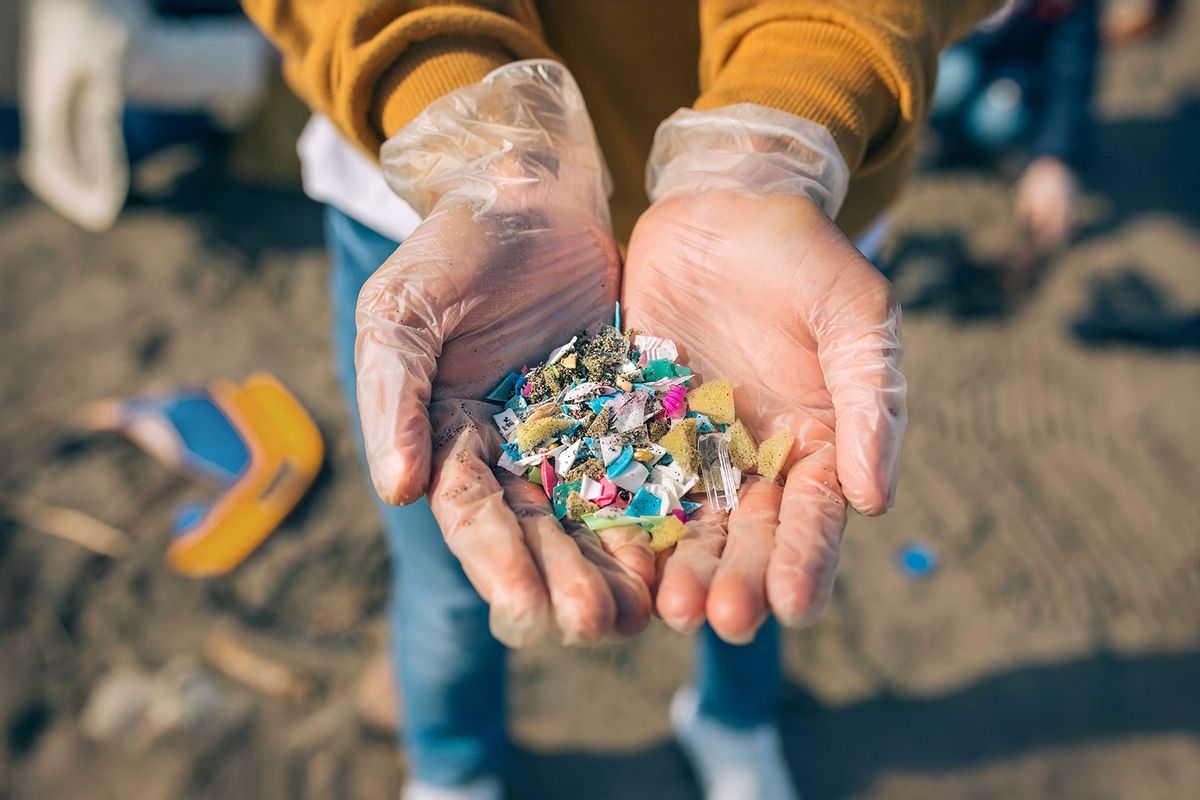Plastic pollution is a scourge on Earth because it doesn’t naturally degrade for decades or even centuries. When many plastics break down, they create tiny particles known as microplastics, which are less than five millimeters long. Their tiny size has allowed them to get into everything, from human blood and breastmilk to the food we eat, stretching to every corner of the globe.
Microplastics create two problems: We don’t fully understand how they impact human health and we don’t know how to get rid of them. A pair of recent studies sheds light on the issue, underscoring the potential risks of ingesting plastic as well as a potential solution to cleaning up the environment.
The first study, published in the journal TrAC Trends in Analytical Chemistry, looked at both microplastics and nanoplastics, or particles that are less than 1 micrometer long. After analyzing more than 900 available relevant research articles, the scholars learned that these tiny plastic particles tended to be highly concentrated in tissues with lesions, as compared to non-lesioned tissues. This suggests that plastic particles could be linked to inflammatory, cancerous and other diseases.
The study also noted that researchers have found microplastics and nanoplastics in a wide range of human tissues and bodily products: arteries, bone marrow, feces, gallstones, liver, lung tissue, placenta, saliva, semen, skin, sputum, testes and veins.
"The alarming link between [microplastics and nanoplastics] occurrence to human tissue lesions and even cancer has attracted scientists’ attention."
The authors noted that microplastics and nanoplastics “were also detected in human thrombi, and the [microplastics and nanoplastics] abundance was positively correlated with platelet levels.” Platelets are tiny cell fragments that coalesce to help the body stop bleeding, and the authors speculate this means the plastics “may accumulate in arteries, causing potential harm to the human circulatory system.”
They added, “The alarming link between [microplastics and nanoplastics] occurrence to human tissue lesions and even cancer has attracted scientists’ attention.”
The second study, published in the journal Science Advances, revealed a possible solution to cleaning up microplastics in the environment. Scientists from Wuhan University have invented a sponge made from squid chitin and cotton-derived cellulose. Both organic compounds are known for eliminating pollution from wastewater, and the Wuhan researchers believe it can be used to manufacture a biodegradable anti-microplastics sponge.
Want more health and science stories in your inbox? Subscribe to Salon's weekly newsletter Lab Notes.
“The notorious behavior of microplastics is reflected by their long-term circulation and persistence in various water bodies,” the authors write. “The development of universal microplastic removal materials is regarded as a challenge.” They add that their biomass foam can absorb large quantities of microplastics. “Our work provides a scalable design strategy for building functional biomass materials and broadening their application for microplastic removal in real water.”
The sponge was tested in four aqueous environments: irrigation water, pond water, lake water and seawater. The new type of sponge removed up to 99.9% of microplastics in all of the samples.
In the long-term, scientists and public health experts hope to replace synthetic polymers — which are largely unregulated and can therefore contain dangerous chemicals — with biodegradable and regulated alternatives such as bioplastics like bio-polyethylene and lignin. If that happened, humanity could at least stop contributing to the problem of global plastic pollution, and then use inventions like this new sponge to clean up the remaining mess. That said, adoption of bioplastics has met resistance thanks to special interests like the fossil fuel industry.
We need your help to stay independent
Until an effective substitute is widely available on the market, it will be necessary for scientists and doctors to study how microplastics and nanoplastics impact human health. The authors of the lesions study note that experts are still uncertain whether these tiny plastic particles cross the blood-brain barrier or the gut-brain axis. If these potential hazards are accurate, they could contribute to neurodegenerative diseases like Alzheimer’s and inflammation. As such, they “require urgent attention, and additional monitoring experiments and epidemiological studies are needed to further elucidate the relevant mechanisms,” the authors warn.
As for the plastics being everywhere in the environment, scientists hope to one day clean it up so that other ecosystems do not suffer because of humanity’s pollution.
“The planet is under great threat from microplastics, and aquatic ecosystems are the first to suffer, as they provide convenient places for microplastics, which can combine with other contaminants and be ingested by multiple levels of organisms,” the authors write.
Read more
about plastic pollution and health



Shares